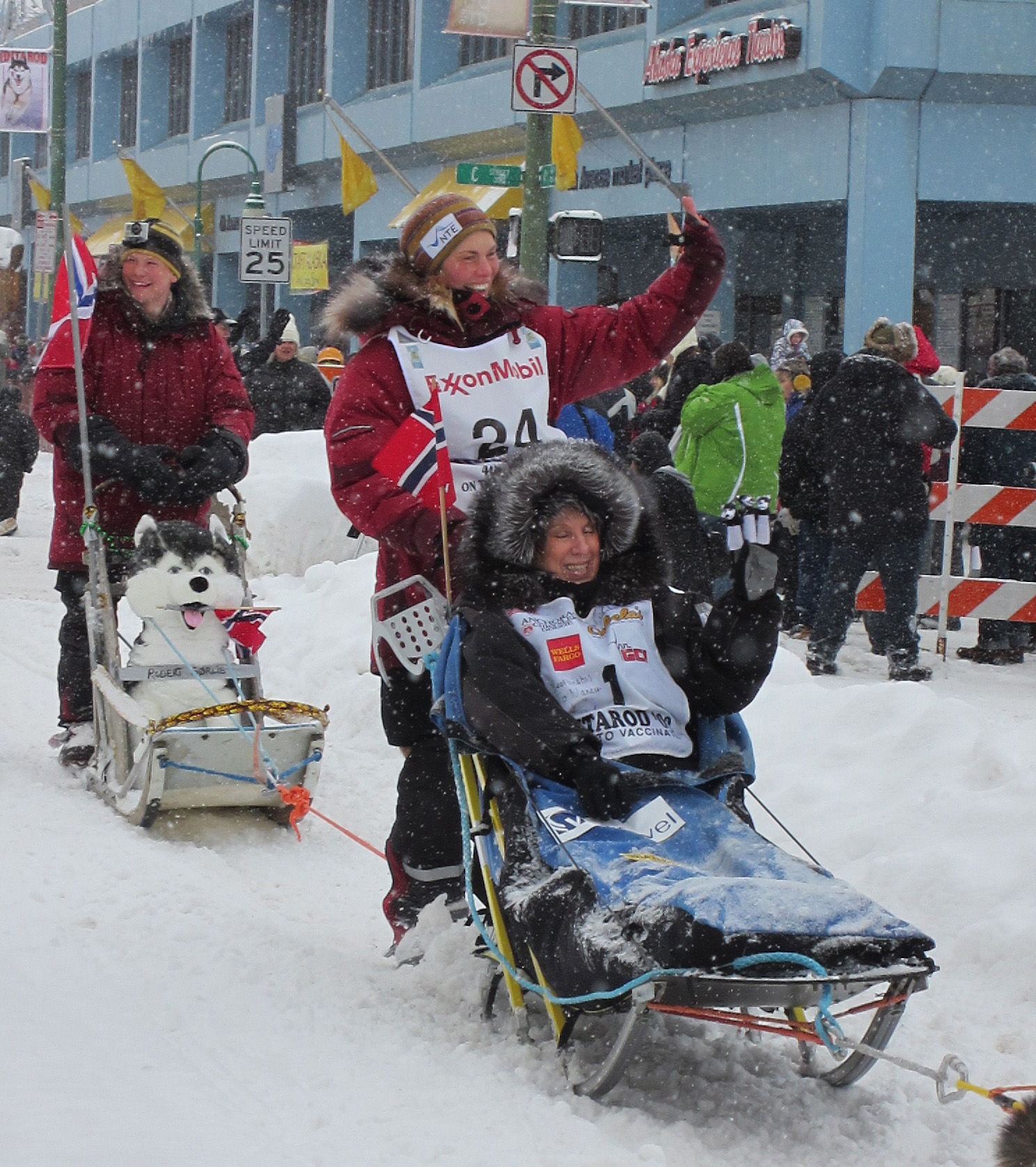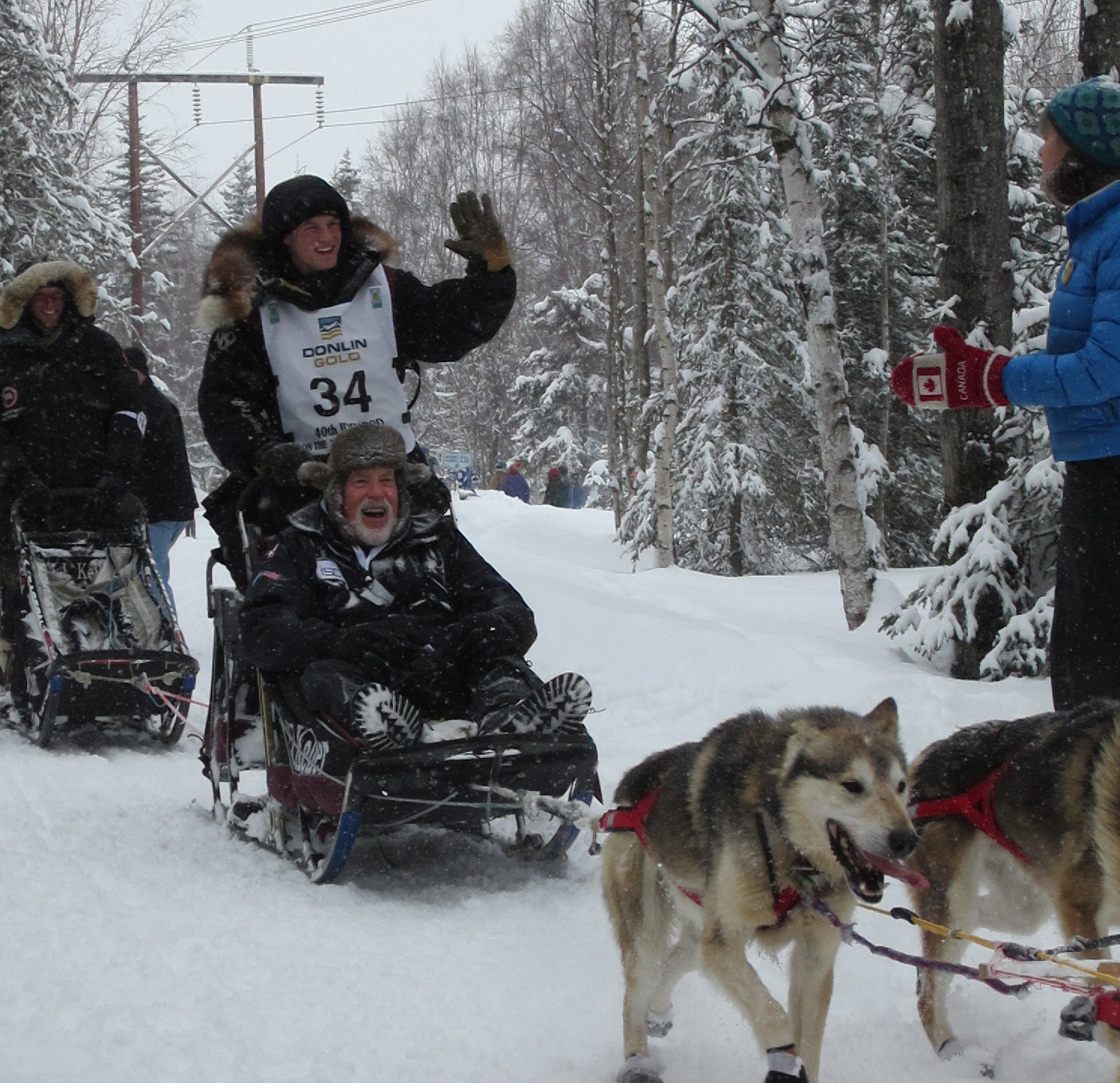
Researching on the two most popular sledge dog races in the world.
Skrevet av: Inger-Elin Utsi transl. Hans Ole Sandring
Dato: 15.03.2012 15:09
Researchers in travel business from the collage in Finnmark are looking at tourism- and growth of society connected to the two largest dog sledge races in the world.
Researchers at Finnmark college (HIF) have for years done research on the physical effects both on mushers and handlers competing in Finnmarksløpet. They are expanding the portfolio of research.
A brand new research project is starting. Kari Jæger and Per Kåre Jakobsen, both from the institute of economy and travel business cooperate with researchers from University of Alaska Anchorage.
The project has many studies with different approaches, but the main title is clear:
The Evolution and Impacts of Long Distance Slad Dog Races: A Program of Comparative Studies of the Iditarod and Finnmarksløpet.
Visited Iditarod
Jæger and Jakobsen visited Alaska recently to start the program. They followed the preparations and the start of this year`s annual Iditarod in Anchorage. The world`s longest sledge dog race, a distance of 1600 kilometers.
More information: iditarod.com
-The intention of this stay was to get inspired of what kind of position and influence this arrangement has in Alaska and North America. To perceive what is important doing research work on, and how this knowledge can be contrebuted to the social and industrial development in a northern context, is important for us, says lecturer Jakobsen.
Both he and Jæger are engaged of absorbing knowledge of how to create attractive arctic destinations for tourists. A cruise ship arrived to Alta for the first time this year, during Finnmarksløpet. Finnmarksløpet has started to achieve a greater dimension than just a sledge dog race.
They point out that updating news concerning the development of Alta and Finnmark, as an example of this kind of destinations, is essentially compared with our position as an education- and research institution.


Iditarod, Alaska: Sigrid Ekran and Dallas Seavay participated in Iditarod this year-Sigrid finished as number eleven.
Photo: Per Kåre Jakobsen
Spreading effects
The research will continue for a while, and already now, after their stay in Alaska, the researchers at Alta Collage looked at the differences between the two arrangements in a context.
- Meeting spectators and volunteers during the race in Iditarod was invaluable compared to study the relevance in a research perspective. We got an insight in how 20 000 teachers around in the USA uses Iditarod as a subject in their education program. This type of information is valuable conserning the engagement this race generates, and makes us understand Finnmarksløpet as an arrangement and phenomenon, says Kari Jæger.
-Our stay had importance in terms of connecting contacts between researches at the University of Alaska Anchoradge in organizing Iditarod, says Jakobsen.
This is not the last time we get information about the project, that embraces broadly and will contribute new development to both Iditarod and Finnmarksløpet.